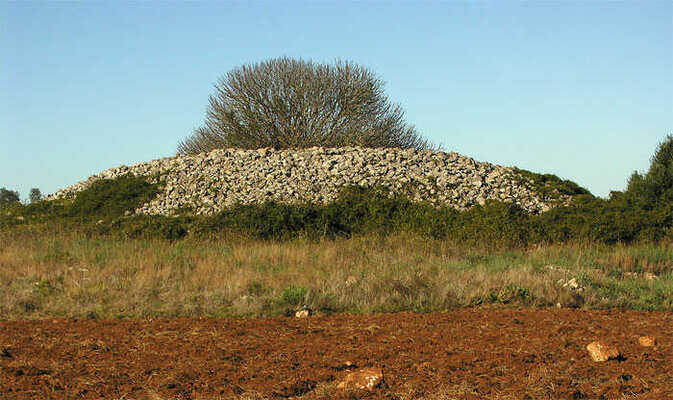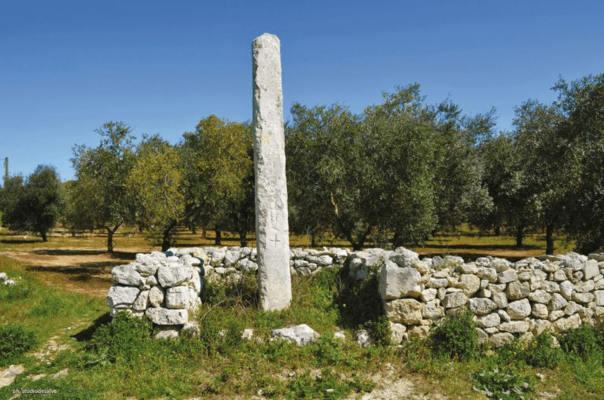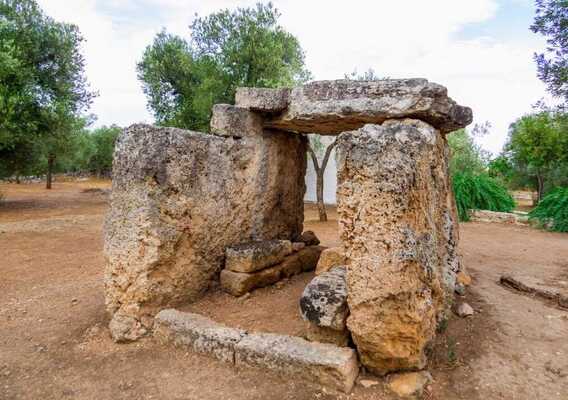Dry stone walls in Puglia
Among the many peculiarities that characterize the Salento landscape and Puglia in general, there are undoubtedly the dry stone walls. These walls give all visitors one of the most authentic faces of Salento such that they immediately understand where they are. The creators of the “dry stone walls”, who handed down this art form through the centuries, were certainly the descendants of the Messapians and the Neoliths.

What do dry stone walls consist of?
The dry stone walls in Puglia are made up of stone blocks placed one above the other, fitted together without the use of cement or other materials, and belong to the ancient customs of the farmers. They began to use them to protect their crops from pastures, to mark the border between one property and another, as a small fence for animals, or they built them along the coast to defend the crops from atmospheric agents.
These stones of various sizes were obtained from the rock, specially crushed, and were aligned by means of increasingly more defined techniques, which were handed down from father to son in the profession of “paritaru” (“parite” in Salento dialect means wall).
Over time the walls have evolved and the functions they have performed are innumerable. There are the walls dating back to the Messapi era with a structure of squared blocks placed horizontally, the patrician ones which carried out the task of delimiting estates and farms belonging to families of great name, those of the common people, built by the farmer himself to delimit the small property called chisùra.
Construction techniques
The construction technique requires that the base of the wall is made up of two rows of large stones, then the smaller stones are set upwards and, finally, the small cracks are closed with small fragments of rock. Stone slabs placed edge-to-edge close the wall at the end, once the desired height has been reached.
- There is a particularity of walls, called “paralupi walls” built to face wolves (once very frequent in our territory).
- The “walls” which, in particular, enclose some farms, present an element that differentiates them from other dry stone walls. The terminal area of the wall is in fact made up of a raised curb made with large flat stones (“cappeddhi“), which protrude from the wall (outwards), so as to prevent wild animals from climbing and penetrating inside the enclosure, where there are tasty domestic animals: rabbits, chickens, etc.
These stone embroideries are a tangential example of the union between man and nature: aesthetically, in fact, it often happens to notice how between one stone and another there is the presence of fauna and flora, which are an important element of ecological diversification and landscape. The color of the rock, tending towards white, thus mixes with green, and offers a pleasant play of colors that express the beauty of the Salento land.

The “Specchie” in Puglia
A living testimony of prehistory in Puglia are the "Specchie" buildings similar to towers and consist of artifacts of very ancient origins made dry from piles of limestone. It is not possible to give these constructions a precise historical location: according to some scholars, in fact, their appearance dates back to the Neolithic, while, for others, they date back to the times of the Messapians.

The Menhirs in Salento
Silent witnesses of the first expressions of human feeling, of a past that did not yet know Messapic civilization, are the Menhirs scattered throughout Salento, whose origin and function remain shrouded in an aura of mystery.

The Dolmens in Salento
It is difficult to explain the overwhelming love for this extraordinary place, a land made of landscapes, colors and mysteries: Salento which has very ancient, even prehistoric, roots. We start precisely from the 4th millennium BC. with the birth of the Dolmen in the Salento area.

